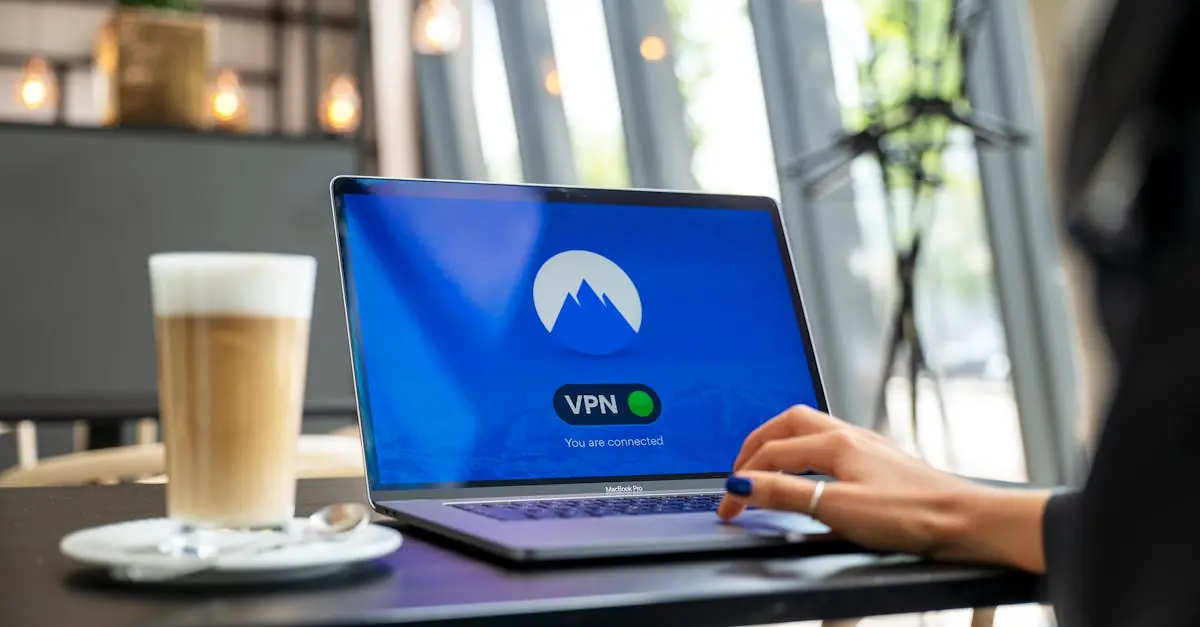Table of Contents
ToggleImagine this: you’re scrolling through your favorite memes when suddenly your iPhone starts acting like a rebellious teenager. Apps open on their own, strange messages pop up, and you can’t help but wonder if your phone’s been possessed. If you think your iPhone might be hacked, don’t panic. You’re not alone in this digital drama.
Signs That Your iPhone Is Hacked
Identifying signs of a hacked iPhone is crucial for users’ security. Recognizing unusual activities and unauthorized apps can help protect personal data.
Unusual Behavior
Rapid battery drain is a common indicator of hacking. Apps running in the background may consume power unexpectedly. Frequent crashes or unresponsive touchscreens can also signal compromise. Random pop-up ads and unsolicited messages may appear. If an iPhone automatically adjusts settings or opens apps without input, users should be cautious. Suspicious data usage, especially when connected to Wi-Fi, warrants attention. Monitoring behavior can reveal patterns that suggest unauthorized access.
Unauthorized Apps
Finding unfamiliar apps can indicate hacking. Strange icons or software not downloaded intentionally should raise concerns. Some malicious applications disguise themselves as legitimate apps. Users might notice apps that run without their knowledge. Checking for apps consuming excessive battery or data is essential. Additionally, reviewing app permissions can reveal unwanted access to personal information. Frequent updates or installations of apps that users don’t remember requires further investigation. Staying vigilant about unauthorized apps helps maintain security.
Steps to Take Immediately
Taking swift action is essential if an iPhone seems compromised. Follow these key steps to restore security and regain control.
Change Your Passwords
Initiate a password change for your Apple ID immediately. This process blocks unauthorized access to iCloud, iTunes, and App Store accounts. It’s crucial to update passwords for other important accounts too, like email and banking. Use strong, unique passwords for each account, incorporating a mix of letters, numbers, and symbols. Avoid using easily guessed information such as birthdays or names. Consider using a reputable password manager for added security and ease of access. Immediate action on this front greatly reduces the risk of further breaches and protects personal information.
Enable Two-Factor Authentication
Activating two-factor authentication provides an extra layer of security. This feature requires not only a password but also a verification code sent to a trusted device. Enabling this feature can significantly enhance account safety and make unauthorized access much more difficult. Access the settings to turn on two-factor authentication for the Apple ID. This step also applies to other critical accounts, such as Google and social media platforms. By implementing this security measure, users bolster their defenses against potential hackers.
How to Secure Your iPhone
Securing an iPhone requires proactive steps to enhance its defenses against potential hacks. Implementing these practices helps to safeguard personal information effectively.
Update Software Regularly
Keeping the iPhone’s software updated plays a crucial role in security. Updates often include patches for vulnerabilities that hackers exploit. Users must enable automatic updates in the Settings app. Regularly checking for updates also ensures that critical security features are in place. Apple frequently releases updates, so it’s important to download and install these as soon as they become available.
Use Strong Passcodes
Creating strong passcodes significantly enhances device security. A six-digit numeric passcode provides a basic level of protection. Opting for an alphanumeric passcode strengthens security further. Users should avoid easily guessable combinations like birthdays or sequential numbers. Protecting devices with Face ID or Touch ID adds an extra layer of security, making unauthorized access much harder. It’s essential to change passcodes regularly to maintain security and prevent unauthorized access.
Recovering a Hacked iPhone
Addressing a hacked iPhone requires prompt action and careful steps. Several effective methods restore security and functionality quickly.
Restore from Backup
Restoring data from a backup can recover the iPhone to a pre-hack state. Users should navigate to Settings, then tap on General, and select Reset. Proceed by tapping on Erase All Content and Settings. After this, follow the on-screen instructions to set up the device. During setup, choose to restore from iCloud or iTunes backup. It’s crucial to ensure that backups were created before the hacking incident. Not restoring to a backup created after the hacking ensures that unauthorized changes do not reappear.
Contact Apple Support
Contacting Apple Support provides access to experts who can assist in resolving security issues. Affected users can reach out via the Apple Support app or visit the official website. They can explain the situation to get tailored assistance. Apple Support can guide resetting the device, troubleshooting issues, and provide advice on keeping the iPhone secure in the future. It’s important to rely on official channels to gather accurate information and assistance for issues that compromise device security.
Preventive Measures
Taking preventive measures ensures that the iPhone remains secure from potential hacks. Users can significantly reduce risks by staying vigilant and employing a few strategic practices.
Avoid Suspicious Links
Avoid clicking on links in unsolicited messages or emails. Scam artists often use these links to gain unauthorized access. If a link appears unusual or if it comes from an unknown source, it’s better to avoid it altogether. Users should also scrutinize website URLs for signs of phishing attempts, such as misspellings or unfamiliar domains. Regularly assessing the authenticity of URLs prevents accidental exposure to malicious sites.
Regularly Monitor Your Accounts
Monitoring accounts regularly keeps users informed about unauthorized activities. Checking bank and credit card statements every month helps catch any strange charges early. A sudden increase in data usage on an iPhone may indicate that something is off and should be investigated. Enabling transaction alerts can provide real-time notifications of account activity, increasing responsiveness to potential hacks. By consistently reviewing account details, users strengthen their overall security posture.
Taking swift action is crucial if an iPhone is suspected to be hacked. By recognizing the signs and implementing immediate security measures, users can regain control and protect their personal information. Changing passwords enabling two-factor authentication and restoring the device from a secure backup are essential steps.
Moreover staying proactive with regular software updates strong passcodes and cautious online behavior can significantly reduce the risk of future hacks. Users should remain vigilant and informed about potential threats to ensure their device remains secure. With the right approach and mindset they can navigate the challenges of a hacked iPhone effectively.




